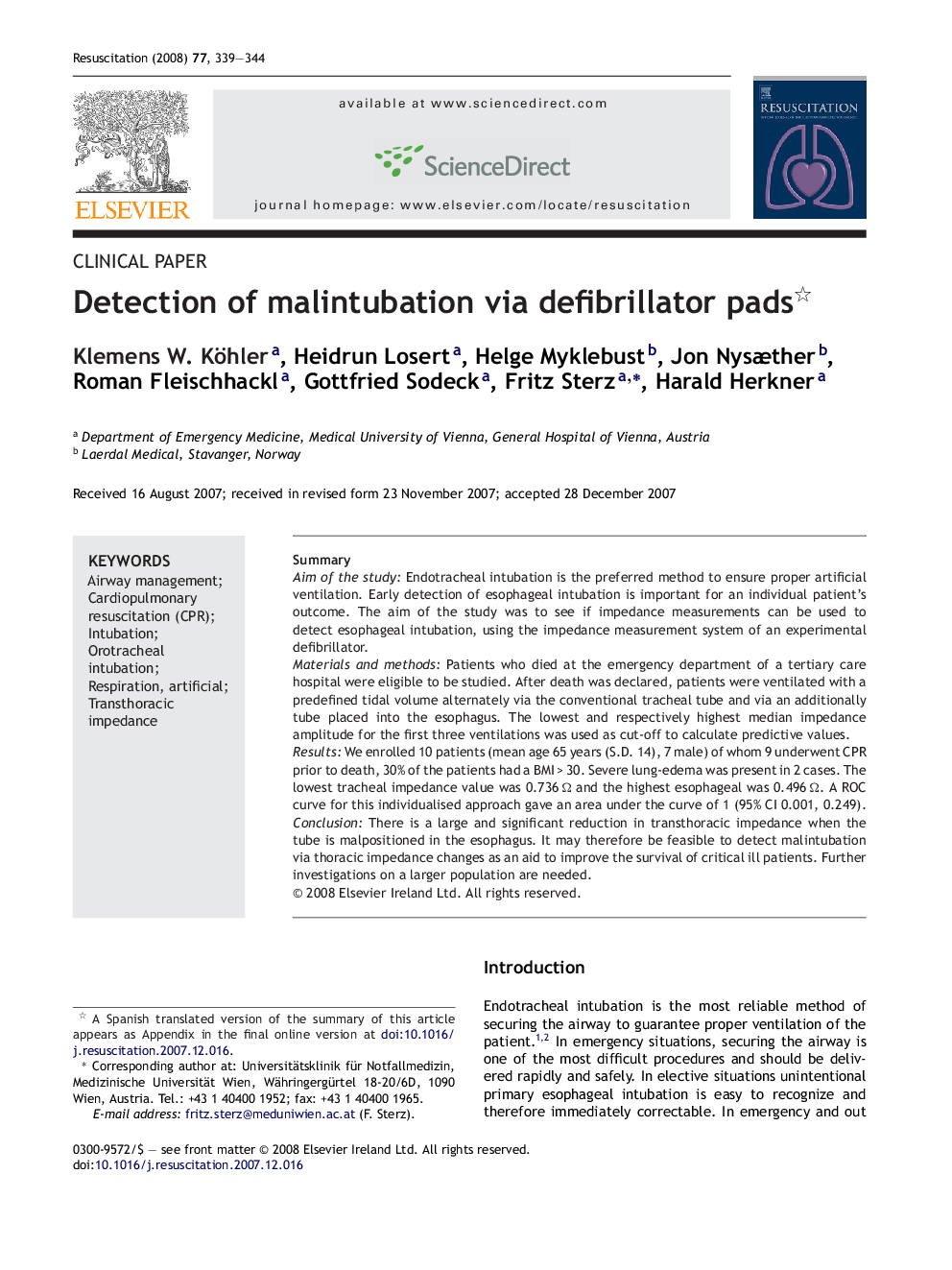| Article ID | Journal | Published Year | Pages | File Type |
|---|---|---|---|---|
| 3011371 | Resuscitation | 2008 | 6 Pages |
SummaryAim of the studyEndotracheal intubation is the preferred method to ensure proper artificial ventilation. Early detection of esophageal intubation is important for an individual patient's outcome. The aim of the study was to see if impedance measurements can be used to detect esophageal intubation, using the impedance measurement system of an experimental defibrillator.Materials and methodsPatients who died at the emergency department of a tertiary care hospital were eligible to be studied. After death was declared, patients were ventilated with a predefined tidal volume alternately via the conventional tracheal tube and via an additionally tube placed into the esophagus. The lowest and respectively highest median impedance amplitude for the first three ventilations was used as cut-off to calculate predictive values.ResultsWe enrolled 10 patients (mean age 65 years (S.D. 14), 7 male) of whom 9 underwent CPR prior to death, 30% of the patients had a BMI > 30. Severe lung-edema was present in 2 cases. The lowest tracheal impedance value was 0.736 Ω and the highest esophageal was 0.496 Ω. A ROC curve for this individualised approach gave an area under the curve of 1 (95% CI 0.001, 0.249).ConclusionThere is a large and significant reduction in transthoracic impedance when the tube is malpositioned in the esophagus. It may therefore be feasible to detect malintubation via thoracic impedance changes as an aid to improve the survival of critical ill patients. Further investigations on a larger population are needed.
